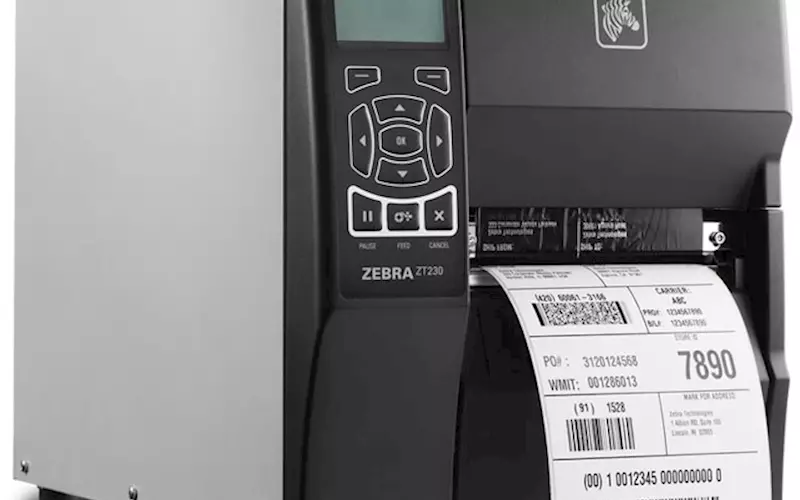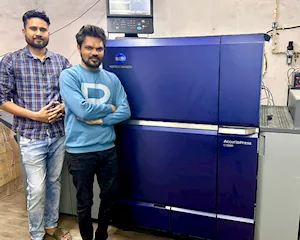Barcode printers market to be worth USD 4.51bn by 2022
The global barcode printers market size is expected to reach USD 4.51 billion by 2022, as per a new research report by Global Market Insights. According to the report, thermal technology will continue to dominate revenue prospects in the coming years. Direct thermal barcode printers market share is set to grow with 9.7% CAGR estimations from 2015 to 2022. Lower number of moving parts, high speed, and more durable images are forecast to positively impact demand across the sector. Thermal transfer
24 May 2017 | By Dibyajyoti Sarma
The report, ‘Barcode Printers Market Size By Technology (Laser, Ink-Jet, Impact, Direct Thermal, Thermal Transfer), By Product (Desktop, Mobile, Tabletop/Industrial), By Application (Retail, Manufacturing, Shipping, Government, Healthcare), Industry Analysis Report, Regional Outlook, Application Potential, Competitive Market Share & Forecast, 2015 – 2022’, spread across 119 pages with 44 market data tables and 37 figures and charts, projects the growing need for tracking in the healthcare sector as a key growth driver.
Barcode printers market share in these applications is estimated to witness growth and surpass USD 800 million by 2022. Other use cases include personal identification such as barcode wristbands that help in authentication for sporting events among other activities.
Product and shelf labeling, POS terminals market growth and mobile checkout options will drive the retail sector at 10.2% CAGR from 2015 to 2022. Portable devices have been gaining traction across organisations for helping issue invoices and conduct business more efficiently, regardless of the location.
Rising popularity of RFID technology, since it does not require line-of-sight and contains a memory module, will pose a strong threat of substitution. The implanted circuitry also facilitates additional functionality such as pressure, humidity, and temperature monitoring. Asset tracking helps companies identify and control inventory levels and has witnessed growing adoption, which will further propel RFID demand.
Key insights from the report
- Industrial barcode printers market size will continue to lead revenue, with revenue expected to exceed USD 2.8 billion by 2022
- Laser, impact, and inkjet technologies are forecast to grow slower than the global average in the coming years. This can mainly be attributed to considerable growth prospects across thermal products, which are characterised by the capability to perform in mission critical applications, accompanied by superior image durability. Increasing demand from short-shelf life applications such as receipts as well as shipping labels will also spur growth.
- Manufacturing applications represent a sizable application area, and accounted for more than 35% of the barcode printers market share in 2014. These products are widely used to label cartons or retail items with European Article Numbers (EANs) or Universal Product Codes (UPCs) before shipment.
- Asia Pacific barcode printers market size will grow at the fastest rate from 2015 to 2022, mainly on account of growing demand across end-use areas.
- Major players are Zebra Corporation, Canon, HP, and Honeywell. Growing number of mergers and acquisitions will lead to consolidation over the long term.
The market by application
Manufacturing was the leading application sector and accounted for over 35% of the overall barcode printers market share in 2014. It has high usage for inventory labeling, and helps in tracking work in progress (WIP) activities and establishing inventory control.
Healthcare sector is estimated to exceed USD 600 million by 2022. This can be primarily attributed to its extensive utilisation in patient tracking and patient ID systems. The device avoids medical errors by allowing access to reliable and precise patient information for specimen collection, surgical procedures, point-of-care medication administration, and other patient care activities.
The market by product
Industrial barcode printers market accounted for over 60% of the revenue in 2014 and is expected to continue its dominance over the forecast period. It is ideally deployed for high volume applications such as order labeling and warehouse labeling. It is also used in harsh environments. Mobile printers are used for printing labels, tickets and receipts, irrespective of the place and time.
The market by technology
Impact printing consists of drum printers and dot matrix. Dot matrix is used to produce medium or low density on-site barcodes through numerous dots printed in matrix form.
Direct thermal printing creates the image on the printing material without a ribbon and is suitable for applications having a short-shelf life such as shipping receipts and labels. Direct thermal barcode printers market is expected to be a high growth application with a CAGR of over 9.5% from 2015 to 2022.
The market by region
North America, led by US barcode printers market share accounted for over 30% of the global revenue in 2014 and is expected to continue its dominance over the next seven years. This can be attributed to rising demand mainly from the US.
Asia Pacific is anticipated to observe significant growth owing to huge investments by MNCs in industrial and retail infrastructure. In addition, establishment of production facilities in these economies is also likely to propel the demand across the region over the forecast period.
Competitive market share
Key barcode printers market share participants include Toshiba Tec, Avery Dennison, SATO Holdings Corporation, Honeywell Scanning & Mobility, Zebra Technologies, Printek, Printronix, and Dascom.
Zebra Technologies manufactures, and sells specialty printing devices, which are used for personal identification, data collection, and automatic identification in applications that enhance customer service, improve productivity, and provide security. In October 2014, the company acquired Motorola Solutions’ Enterprise business for USD 3.45 billion with aim to strengthen their geographical presence, product portfolio, and industries served.














 See All
See All